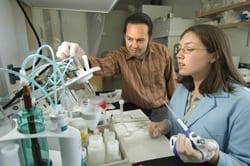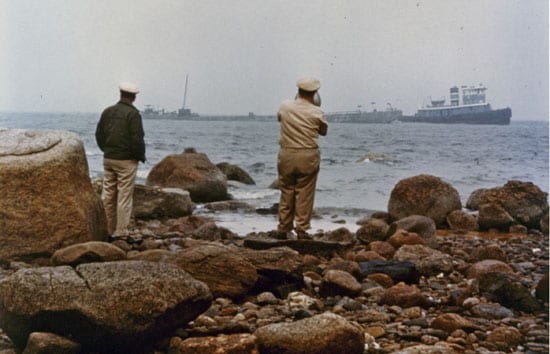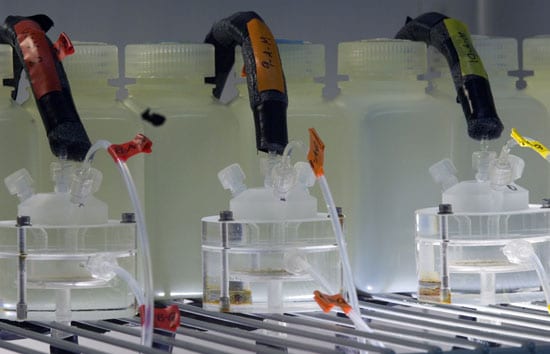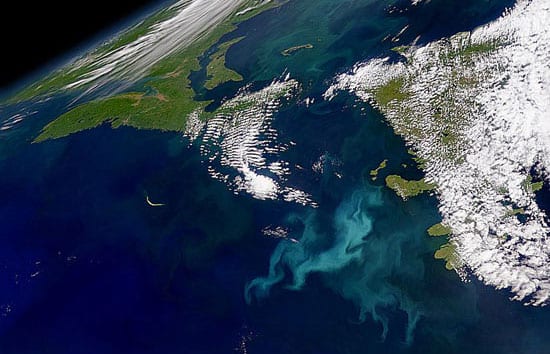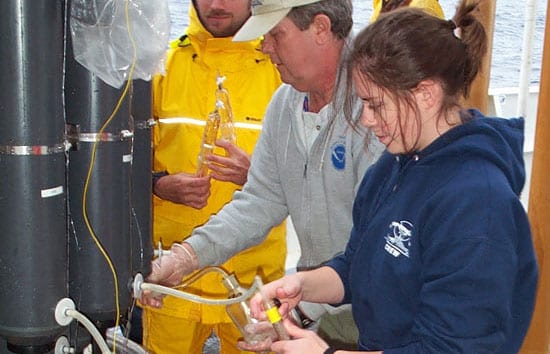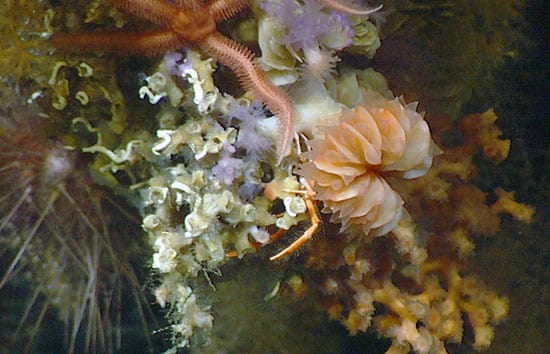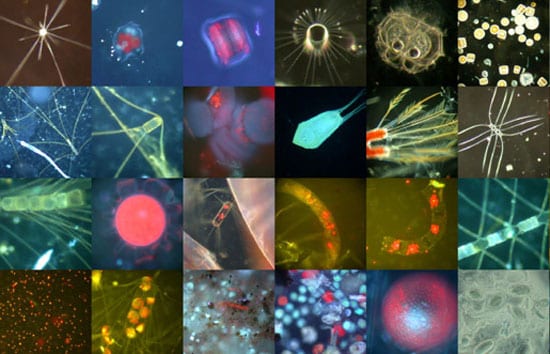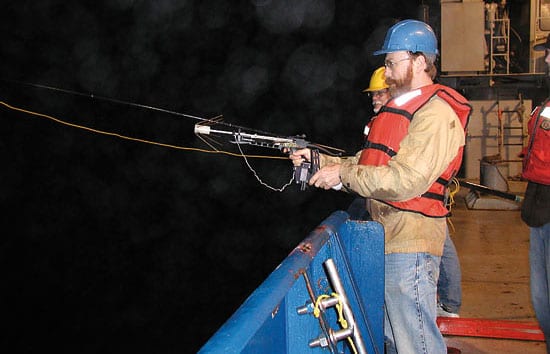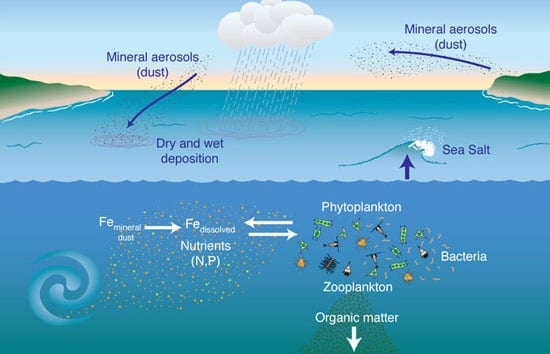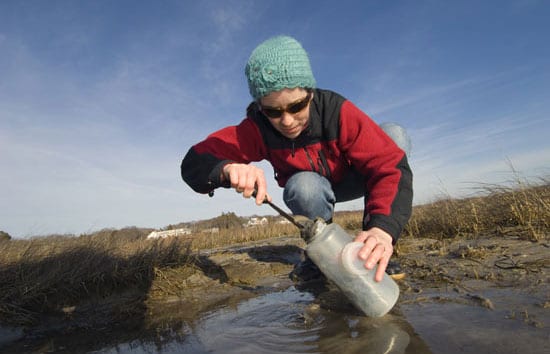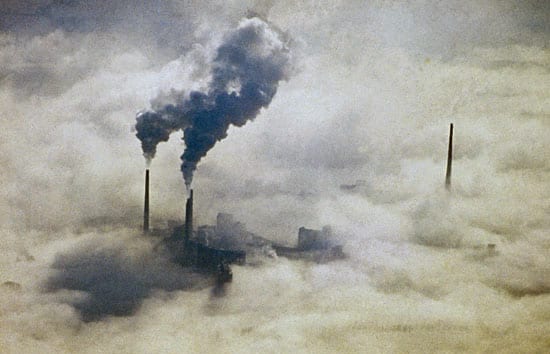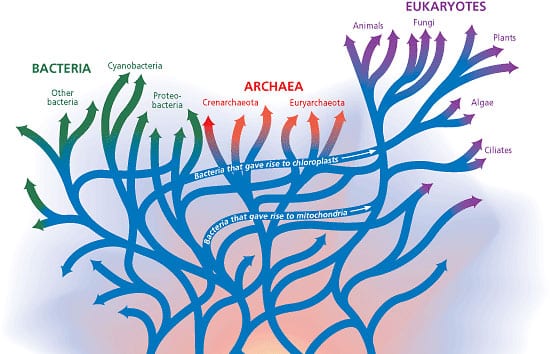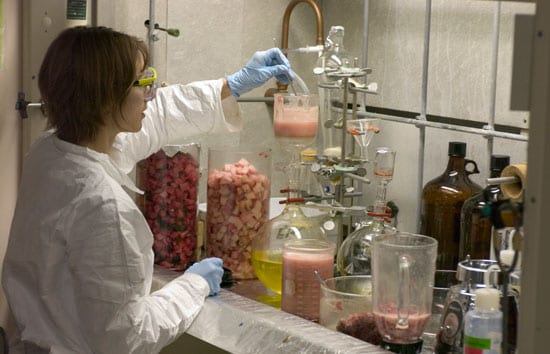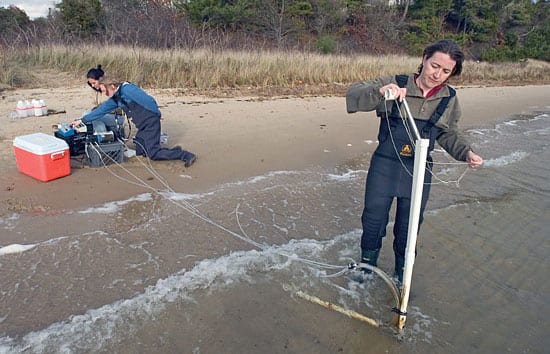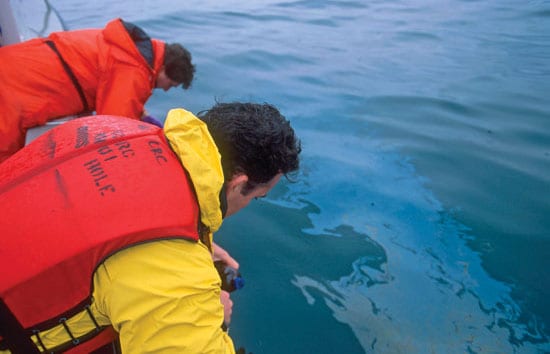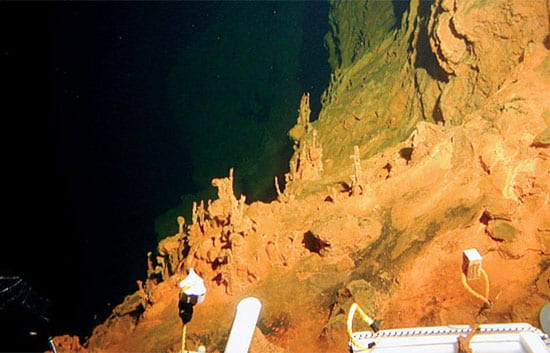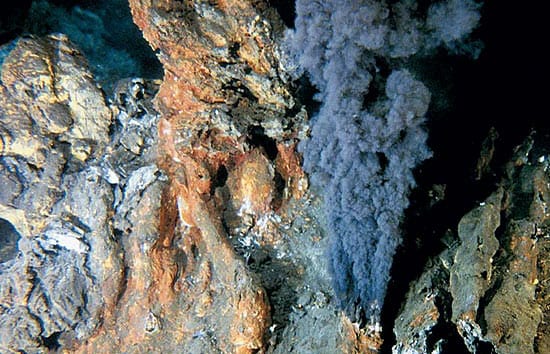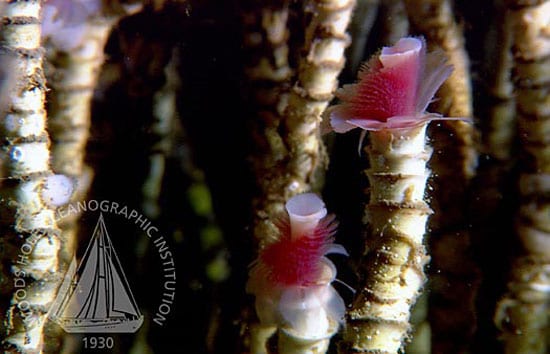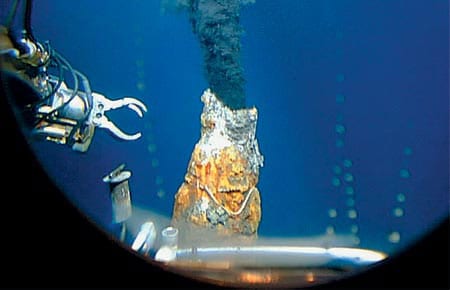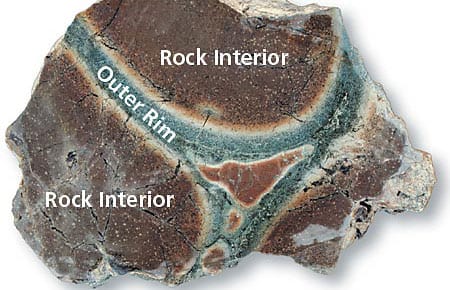Marine Chemistry & Geochemistry
Acid Rain Has a Disproportionate Impact on Coastal Waters
The release of sulfur and nitrogen into the atmosphere by power plants and agricultural activities plays a minor role in making the ocean slightly more acidic on a global scale, but the impact is greatly amplified in the shallower waters of the coastal ocean, according to new research by atmospheric and marine chemists.
Read MoreGrowing Marine Plants Need Their Vitamins
Your mother was right: You need your vitamins. And that turns out to be true for life in the oceans, too. B12—an essential vitamin for land-dwelling animals, including humans—also plays…
Read MoreStill Toxic After All These Years
This is a story about persistence—of oil, and of people. It began in 1969 when the barge Florida ran aground off Cape Cod, spilling 189,000 gallons of fuel. But it…
Read MoreCell-sized Thermometers
Climate shifts are a repeating feature in Earth’s history, but humans have added so much greenhouse gas (especially carbon dioxide) to the atmosphere that climate is warming in our lifetimes.…
Read MoreResearchers Find Substantial Amount of Mercury Entering the Ocean through Groundwater
Researchers from the Woods Hole Oceanographic Institution (WHOI) have found a new and substantial pathway for mercury pollution flowing into coastal waters. Marine chemists have detected much more dissolved mercury entering the ocean through groundwater than from atmospheric and river sources.
Read MoreFollow the Carbon Trail
Carbon makes the world go around. It is the building block of life on Earth, and in the form of carbon dioxide gas in the atmosphere, it has a powerful…
Read MoreHow Long Can the Ocean Slow Global Warming?
It is 4:30 a.m., far from land. A group of scientists clad in bright yellow foul-weather gear gathers in the open bay of a research ship. They wait in the…
Read MoreThe Coral-Climate Connection
Are the climate changes we perceive today just part of the Earth system’s natural variability, or are they new phenomena brought about by human activities? One way to find out…
Read MoreA Journey to the Ocean’s Twilight Zone
You are about to enter another dimension. You’re moving into a place of both shadow and substance, of things and ideas; a journey into a wondrous part of the ocean,…
Read MoreSwimming in the Rain
Twilight zones, witch hunts, and crossbows usually don’t find their way into tales about new oceanographic instruments. This story isn’t typical, but it does start in the usual way, with…
Read MoreDust Busters for the Oceans
Like most living things, microscopic marine plants need iron and other minerals to live and grow. On land, soil provides a ubiquitous source of minerals, but how do essential nutrients…
Read MoreGraduate Student Discovers an Unusual New Species
Sheri Simmons gets into the rugged wilderness as often as she can, backpacking in Newfoundland, the Sierras, the Adirondacks, and Alaska—where she once encountered a grizzly bear on a trail.…
Read MoreEarth Can’t Soak Up Excess Fossil Fuel Emissions Indefinitely
Earth?s land and oceans have been soaking up the excess carbon Earth?s land and oceans have been soaking up the excess carbon dioxide that humans have pumped into the atmosphere by burning fossil fuels. But there are limits.
A new-generation computer model indicates that the capacity of land and ocean to absorb and store the heat-trapping greenhouse gas will reach its peak by the end of the century?removing a brake that has been tempering the effects of global warming.
The Deeps of Time in the Depths of the Ocean
Wherever we have looked in the oceans, we have found previously unknown microorganisms. We have often found them living in conditions once thought to be incompatible with life, using unfamiliar physiologic and metabolic adaptations. These discoveries have radically changed our thinking about where and how life may have originated and evolved on this planet, and where it might exist on others.
Read MoreMistaken Identity
Researchers at the Woods Hole Oceanographic Institution have found that two chemicals accumulating in the tissues of marine animals and suspected to be manmade pollutants actually came from natural sources.
Read MoreWater Flowing Underground
Groundwater discharge appears to be an important factor for determining the chemistry of the coastal ocean. As fresh groundwater flows toward the sea, it rises up over denser, salty water. The fresh and salty water mix along the interface, and the resulting fluid discharges at the shoreline. This interface between underground water masses has recently been described as a “subterranean estuary,” a mixing zone between fresh and salty water analogous to the region where a river meets the ocean.
Read MoreOil in Our Coastal Back Yard
On September 16, 1969, the barge Florida ran aground off Cape Cod, rupturing its hull and spilling 189,000 gallons of No. 2 fuel oil. Winds and waves pushed the oil onto the beaches and marshes of West Falmouth, Massachusetts, carrying with it dead lobsters, scup, and cod.
Read MoreLiving Large in Microscopic Nooks
Newly discovered deep-sea microbes rearrange thinking on the evolution of the Eart—and life on it.
Read MoreMixing Oil and Water
In recent decades scientists have made substantial progress in understanding how oil enters the oceans, what happens to it, and how it affects marine organisms and ecosystems. This knowledge has led to regulations, practices, and decisions that have helped us reduce sources of pollution, prevent and respond to spills, clean up contaminated environments, wisely dredge harbors, and locate new petroleum handling facilities.
Read MoreThe Remarkable Diversity of Seafloor Vents
Since 1982, I had spent most of my waking hours examining pieces of seafloor vent deposits that had been recovered during a routine dredging operation along the Juan de Fuca Ridge off the Pacific Northwest coast.
Read MoreWhen Seafloor Meets Ocean, the Chemistry Is Amazing
Scientists are discovering that abundant quantities of methane gas are continually seeping from the seafloor throughout the oceans. This widespread but overlooked natural phenomenon has potentially dramatic implications on world energy supplies, life in the oceans, and Earth’s climate.
Read MoreHow to Build a Black Smoker Chimney
Diving along the mid-ocean ridge at 21°N on the East Pacific Rise, scientists within the deep submersible Alvin peered through their tiny portholes two decades ago to see an astonishing sight: Clouds of billowing black “smoke” rising rapidly from the tops of tall rocky “chimneys.”
Read MoreThe Cauldron Beneath the Seafloor
Just over 20 years ago, scientists exploring the mid-ocean ridge system first made the spectacular discovery of black smokers—hydrothermal chimneys made of metal sulfide minerals that vigorously discharge hot, dark, particulate-laden fluids into the ocean.
Read MoreA New Way to Catch the Rain
The carbon budget of the upper ocean includes an important loss to the deep ocean due to a very slowly falling rain of organic particles, usually called sediment. As this sediment falls through the upper water column it is consumed, mainly by bacteria, and the carbon is recycled into nonsinking forms (dissolved or colloidal organic carbon or inorganic forms). Thus the sediment rain decreases with increasing depth in the water column, and only a tiny fraction reaches the deep sea floor, less than about one percent.
Read More
